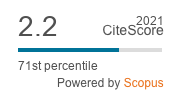Biodeterioration of the Ancient Structure
Abstract
A survey of the condition of ancient monuments in Sukhotai Historical Park which was the center of valuable historical sites. Selected sampling sites were Wat Mahathat and Wat Sri Chum. Results of investigation indicate that algae, bacteria and fungi were present in large quantity in almost all samples. All of the monuments were composed of brick, Jaterite, stucco and soil. The number of bacteria were present in highest amount. The algae were lesser than bacteria and fungi were present in small quantity. Most of algae found on Sukhothai’s monuments are blue-green algae which are closely relation to bacteria and fungi. Some algae are closely associated wit h some fungi and a new type of plant-li chen-is formed. Most of the lichens found on Sukhothai’s monuments are crustose lichen. The Number of lichens is relatively high on the walls and stupas especially those monuments with are at the North.Lichens always completely fill the pores of porous building materials of the laterite structures. Another plants on the monuments and stupas are Bryophyte which include moss and liverwort. Ferns, grasses and dicotyledonous plants are found at various places on the Sukhothai,s monuments. The presence of various types of micro-organisms and higher vegetation, therefore the Buddha images are green colour the stucco and the stupa are dark green or nearly black and some places are dark brown by some kinds of algae. The sulpher-cycle bacteria cause black stain on building materials Lichen and fungi excrete some organic acids which react further with building materials. This is promotive of the disintegration of building materials. The deteriroration process of the building materials develop further by soil formation or windborne dust has accumulated on the building material, mosses, ferns, grass and higher plants start to grow and the roots insert themselves into the pores, the pressure occurred and destructive the bricks and laterites which are 700 years old then these building materials are cracked and ruin later.
Downloads
Published
How to Cite
Issue
Section
License
This is an open access article under the CC BY-NC-ND license http://creativecommons.org/licenses/by-nc-nd/4.0/









